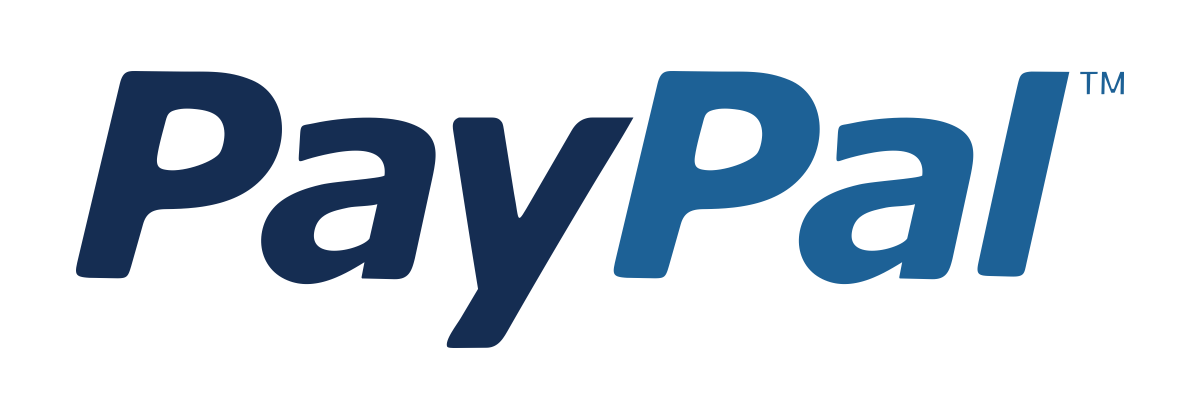Prometheus
Master Prometheus from fundamentals to advanced use cases and learn how to monitor, visualize, and alert on infrastructure and applications.Preview Prometheus course
Price Match Guarantee Full Lifetime Access Access on any Device Technical Support Secure Checkout Course Completion Certificate 99% Started a new career
BUY THIS COURSE (
99% Started a new career
BUY THIS COURSE (GBP 12 GBP 29 )-
 93% Got a pay increase and promotion
93% Got a pay increase and promotion
Students also bought -
-

- Data Engineering with Talend
- 17 Hours
- GBP 12
- 540 Learners
-

- Career Path - Data Analyst
- 400 Hours
- GBP 32
- 6488 Learners
-

- Career Accelerator - Head of Engineering
- 200 Hours
- GBP 32
- 204 Learners

In the world of cloud-native computing, visibility and observability are no longer optional — they are essential. As organizations adopt microservices, containers, and Kubernetes, the complexity of distributed systems increases exponentially. To maintain performance, reliability, and uptime, engineers must use tools that offer real-time metrics, intelligent alerting, and scalability.
This Prometheus – Monitoring and Alerting for Cloud-Native Systems Online Course by Uplatz is designed to help system administrators, DevOps engineers, site reliability engineers (SREs), and developers gain complete mastery of Prometheus, the industry-standard open-source toolkit for monitoring and alerting in modern infrastructures.
Developed by SoundCloud and now a graduated CNCF (Cloud Native Computing Foundation) project, Prometheus has become the backbone of monitoring for Kubernetes, Docker, and cloud-native architectures worldwide.
🔍 What is Prometheus?
Prometheus is an open-source monitoring and alerting system built specifically for time-series data collection. It records metrics in real time, allowing teams to monitor system health, application performance, and service dependencies with high precision.
Unlike legacy monitoring tools that rely on agents or external databases, Prometheus uses a pull-based model — scraping metrics from targets over HTTP at defined intervals. This ensures efficiency, autonomy, and minimal overhead. Prometheus stores these metrics in its own time-series database (TSDB) and uses PromQL (Prometheus Query Language) to query and analyse data instantly.
The platform integrates seamlessly with Grafana for dashboards and Alertmanager for alert routing, making it a complete observability stack suitable for both small teams and enterprise operations.
⚙️ How Prometheus Works
Prometheus follows a simple yet powerful architecture based on four key components:
-
Prometheus Server – The core engine responsible for scraping, storing, and querying metrics.
-
Client Libraries / Exporters – Components that expose application and system metrics (e.g., Node Exporter, cAdvisor, Blackbox Exporter).
-
Alertmanager – Manages alerts generated by Prometheus rules and routes them via email, Slack, PagerDuty, or webhooks.
-
Grafana Integration – Provides rich, interactive visualizations for time-series data.
Prometheus collects metrics as numerical time series, identified by metric names and key/value labels — creating a multidimensional data model. This model enables flexible filtering and aggregation, allowing engineers to slice and analyse data from multiple perspectives.
Through service discovery mechanisms, Prometheus automatically detects dynamic targets in Kubernetes, Docker, or cloud environments without manual configuration. Its federation feature further ensures scalability and high availability across large clusters.
🏭 How Prometheus is Used in the Industry
Prometheus has become a cornerstone of observability in modern infrastructure. Global technology companies and startups alike rely on it to maintain uptime, optimise performance, and ensure reliability.
Industry use cases include:
-
Kubernetes Monitoring: Tracking node health, pod status, and container performance at scale.
-
Application Performance Monitoring (APM): Observing APIs, latency, error rates, and resource utilisation.
-
Infrastructure & Server Metrics: Monitoring CPU, memory, disk I/O, and network usage.
-
Alerting & Incident Response: Proactive notifications via Alertmanager to prevent downtime.
-
SLA/SLO Tracking: Measuring service level objectives to maintain compliance and reliability.
Prometheus’ flexibility, ecosystem support, and scalability make it the default monitoring choice for Google Cloud, AWS EKS, Azure AKS, Red Hat OpenShift, and countless DevOps pipelines across the globe.
🌟 Benefits of Learning Prometheus
Mastering Prometheus empowers professionals to manage production systems with confidence.
Key benefits include:
-
End-to-End Observability: Gain visibility into every layer of your infrastructure — from containers to applications.
-
Real-Time Monitoring: Detect performance degradation instantly through powerful time-series metrics.
-
Custom Alerting: Set intelligent, rule-based alerts for proactive incident management.
-
Scalable Architecture: Monitor thousands of endpoints with minimal configuration.
-
Kubernetes Integration: Native compatibility with cloud-native service discovery and labels.
-
Cost-Effective Solution: 100% open-source with strong community and CNCF backing.
-
Career Advantage: Prometheus is a must-have skill for DevOps, SRE, and Cloud Engineer roles in top organizations.
By learning Prometheus, you don’t just acquire a tool — you gain the ability to design reliable, self-healing systems that align with modern DevOps principles.
📘 What You’ll Learn in This Course
This course blends theory and practice to ensure a solid understanding of Prometheus’ full ecosystem.
You will learn to:
-
Understand the Prometheus architecture and monitoring paradigms.
-
Install and configure Prometheus in local, Docker, and Kubernetes environments.
-
Collect system, application, and container metrics using Node Exporter, cAdvisor, and custom exporters.
-
Write and execute powerful queries with PromQL.
-
Create recording rules and alert rules for automated monitoring.
-
Integrate Prometheus with Alertmanager for notifications via Slack, email, and webhooks.
-
Build interactive Grafana dashboards for real-time visualization.
-
Enable service discovery for dynamic environments and microservices.
-
Use relabeling and retention policies for optimized metric management.
-
Scale Prometheus using remote write/read and federation for large environments.
-
Apply best practices for security, performance, and high availability.
Each section includes hands-on exercises, practical labs, and case studies that replicate real-world monitoring challenges faced in production environments.
🧠 How to Use This Course Effectively
To maximise learning outcomes:
-
Start Small: Begin by monitoring a single node or service before expanding to cluster-level setups.
-
Practice Continuously: Follow along with all configuration examples and write custom PromQL queries.
-
Integrate Early: Connect Prometheus with Grafana and Alertmanager as soon as you set up your first instance.
-
Deploy in the Cloud: Experiment with Prometheus in Docker and Kubernetes to understand dynamic service discovery.
-
Refine Rules & Alerts: Customise alert thresholds and notification routes.
-
Revisit Key Topics: Review PromQL regularly to strengthen query-writing proficiency.
-
Capstone Project: Build a full-scale monitoring solution combining Prometheus, Grafana, and Alertmanager.
👩💻 Who Should Take This Course
This course is perfect for:
-
System Administrators managing servers and on-prem infrastructure.
-
DevOps Engineers responsible for CI/CD pipelines and application uptime.
-
Site Reliability Engineers (SREs) building resilient, self-healing systems.
-
Developers wanting visibility into performance and resource usage.
-
Cloud Architects & IT Professionals deploying Kubernetes, Docker, or microservices.
-
Students and Enthusiasts exploring monitoring, observability, and time-series databases.
No prior experience with Prometheus is required — only a basic understanding of Linux and networking concepts.
🧩 Course Format and Certification
This is a self-paced online course with lifetime access and regular updates.
You’ll receive:
-
HD video lessons with live demos and configurations.
-
Downloadable labs and Prometheus configuration files.
-
Interactive assignments and quizzes.
-
Real-world use cases from cloud and Kubernetes environments.
-
Capstone project for portfolio development.
Upon completion, you’ll receive a Course Completion Certificate from Uplatz, verifying your ability to design, implement, and manage Prometheus monitoring stacks across cloud-native infrastructures.
🚀 Why This Course Stands Out
-
Comprehensive Curriculum: Covers fundamentals, advanced PromQL, and real-world deployments.
-
Hands-On Experience: Every concept reinforced with practical labs and projects.
-
Industry Focused: Aligns with modern DevOps and observability best practices.
-
Career-Ready Skills: Prometheus expertise is a core requirement in SRE and cloud roles.
-
Future-Proof Learning: Constantly updated for the latest Prometheus and CNCF ecosystem changes.
By the end of this course, you’ll confidently monitor and manage any distributed system — from single servers to multi-cluster Kubernetes environments — using Prometheus.
🌐 Final Takeaway
Prometheus is more than a tool — it’s an observability mindset.
It empowers engineers to understand not just what is happening, but why it’s happening. By combining metrics, visualization, and alerts, Prometheus provides the insight necessary for proactive operations and reliable systems.
The Mastering Prometheus – Monitoring and Alerting for Cloud-Native Systems Course by Uplatz equips you with all the skills and confidence to implement and scale Prometheus in any environment. You’ll emerge ready to build data-driven monitoring architectures that deliver performance, resilience, and business value.
Start your learning journey today and become an expert in Prometheus monitoring, alerting, and observability for modern cloud-native systems.
Course/Topic 1 - Coming Soon
-
The videos for this course are being recorded freshly and should be available in a few days. Please contact info@uplatz.com to know the exact date of the release of this course.
- Understand core Prometheus components: TSDB, exporters, and Alertmanager.
- Write advanced queries using PromQL.
- Create custom metrics using client libraries.
- Visualize metrics with Grafana and set up alert thresholds.
- Monitor containers using Node Exporter, cAdvisor, and kube-state-metrics.
- Deploy Prometheus on Kubernetes using Helm and configure service discovery.
- Set up Alertmanager for grouping, inhibition, and routing alerts.
- Implement retention, recording rules, and remote write for scalable architectures.
- What is Prometheus
- Key Components and Architecture
- Use Cases and Ecosystem
- Binary Installation
- Configuration File Overview
- Web Interface and API
- Node Exporter
- cAdvisor
- Application Exporters
- Custom Metrics with Client Libraries
- Instant vs Range Vectors
- Aggregation Operators
- Rate, Increase, and Time Functions
- Connecting Prometheus as a Data Source
- Creating Dashboards and Panels
- Using Variables and Templates
- Alert Rules Configuration
- Alertmanager Setup
- Routing, Inhibition, and Grouping
- Integration with Slack, Email, Webhooks
- Service Discovery in Kubernetes
- Monitoring Kubernetes Metrics
- Helm Charts and Prometheus Operator
- Recording Rules
- Remote Write and Long-Term Storage
- Authentication and Security
- Scaling Prometheus Federated Architecture
- Real-Time Monitoring for Node.js App
- Container Monitoring with Docker Compose
- Kubernetes Cluster Monitoring
-
Commonly Asked Questions
-
Practical Scenario-Based Questions
-
Best Practices Explained
- DevOps Engineer
- Site Reliability Engineer (SRE)
- Cloud Infrastructure Engineer
- Platform Engineer
- Monitoring and Observability Specialist
Prometheus is an open-source monitoring and alerting toolkit. Its main components are the Prometheus server, time-series database (TSDB), exporters, PromQL, Alertmanager, and visualization via Grafana.
Prometheus uses a pull-based mechanism to scrape metrics from HTTP endpoints exposed by exporters or instrumented applications.
PromQL is Prometheus' query language that enables users to select, filter, and aggregate time series data for monitoring and alerting.
Exporters are tools that expose metrics in a Prometheus-compatible format, such as Node Exporter for hardware metrics and cAdvisor for container metrics.
Alerts are defined using alerting rules in the configuration file. When a rule’s condition is met, Prometheus sends the alert to Alertmanager, which handles deduplication, grouping, and notification.
Alertmanager receives alerts from Prometheus and routes them to appropriate receivers like Slack or email, managing silences, grouping, and inhibition.
Prometheus is pull-based, does not require agents, stores data as time series, and uses PromQL. Traditional tools often rely on push-based agents and lack a native time-series database.
Recording rules precompute queries and store results as new time series, which improves performance and simplifies repeated queries.
Prometheus integrates with Kubernetes using service discovery to dynamically monitor pods, nodes, and services via the Prometheus Operator or Helm charts.
Prometheus can be scaled using federation or by splitting workloads across multiple Prometheus servers and aggregating results through a central server.









